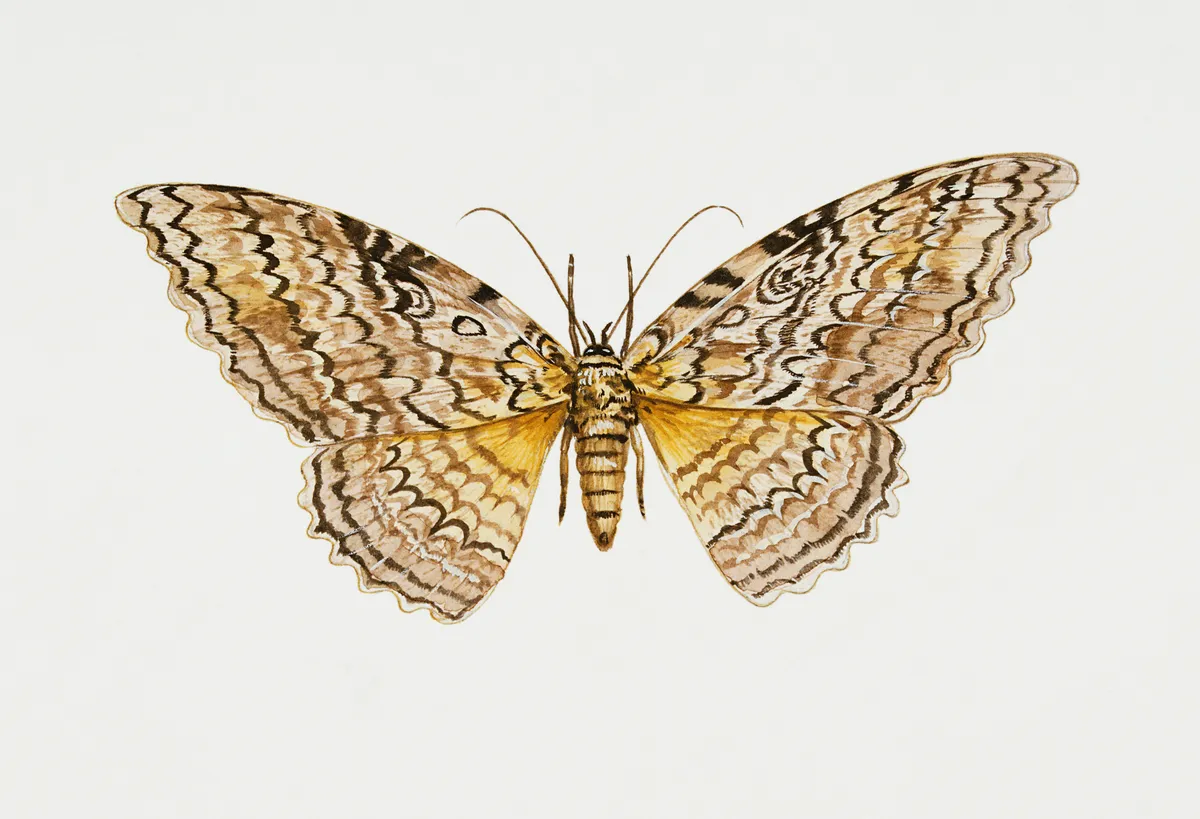The answer to the biggest moth question really depends on what you are measuring – surface area of the wings, wingspan or weight?
Which moth has the largest wing surface area?
The title of biggest moth is most commonly bestowed upon two similar-looking giant silk moths: the atlas moth (Attacus atlas, below) and the Australasian Hercules moth (Coscinocera hercules, above), which can confidently be compared to dinner plates on the basis of the surface area of their wings.
The atlas moth is native to East Asia, found in China, India, Indonesia and Malaysia, and was named for the Titan of Greek mythology who was burdened with holding up the heavens following the Titanomachy (the battles between the Titans and the Olympians).
The Hercules moth is native to New Guinea and Australia. The rear corners of the male moth are stretched into long tails, and can follow the pheromones of female moths up to two kilometres away.
Not unexpectedly, the caterpillars for both species are also large and impressive. Neither species eats as an adult, relying on the nutrients eaten and absorbed during their larval lives, and they save energy where possible.
Which moth has the largest wingspan?
However, if you were to measure the size of moths by the wingspan, both of the atlas moth and the Hercules moth are beaten by the white witch moth (Thysania agrippina, below) of tropical America – a Brazilian specimen was once recorded at very nearly 30cm across.

Also known as the ghost moth (this common name is also used for a different UK species, Hepialus humuli), great grey witch and great owlet moth, it’s a mysterious species whose caterpillars have still not been found. There is a White Witch Watch project run by entomologists which hopes to learn more about the life history of the species – asking for observations and photographs from naturalists and scientists.
What is the world’s heaviest moth?
If weight is what you’re interested in, then Australia and New Zealand’s giant wood moth (Endoxyla cinereus) is the clear winner at 30g – about 50 per cent heavier than a European robin.
Its huge larvae, which bore into the trunks of eucalyptus trees and are in turn eaten traditionally by indigenous Australians, may well be the world’s biggest caterpillars, although that, too, will depend on what you are measuring.
Main image: A Hercules moth on a child's hand. © Yana Tatevosian/Getty